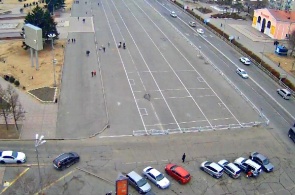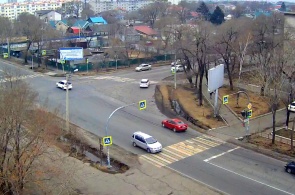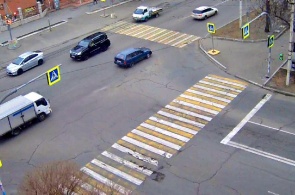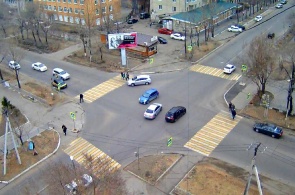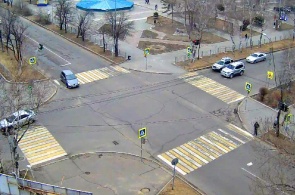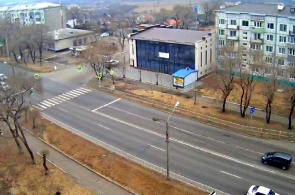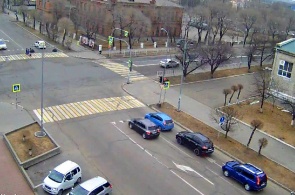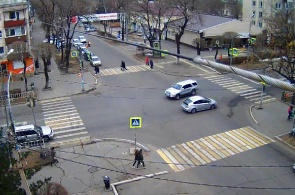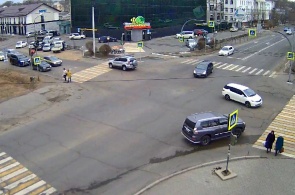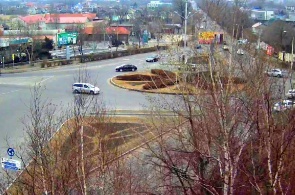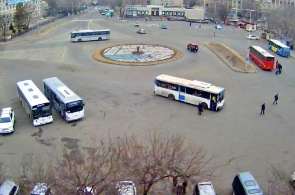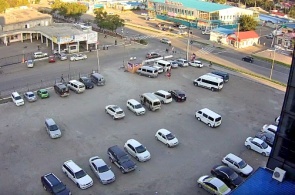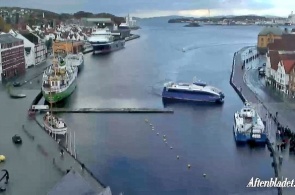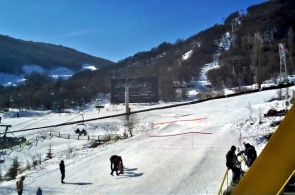The founding date of Ussuriisk is considered to be 1866 when immigrants from the Astrakhan and Voronezh provinces began building a new settlement. The village founded by them was originally named Nikolsky in honor of Nicholas the Wonderworker. Burned out by the Hungarians in 1868, the village was soon rebuilt. By 1880, Nikolskoe had grown noticeably. It housed the tritium and the fourth battalion of the First East Siberian Brigade. At this time, a permanent road was built, connecting Nikolskoe with Vladivostok. Nikolskoye was a district village of the South Ussuriisk region of the Primorsk region. The impetus to economic development was given by the construction of the Trans-Siberian Railway. In connection with the growth of population and the development of industry, the question arose of granting the status of a city to Nikolsky. In 1895, the peasants and representatives of the merchant class appealed to the authorities with a corresponding request. In 1898, having united with the station workers' settlement Ketrytsevo, Nikolskoye was raised to the city level and received the name of Nikolsk. Natives of Ukraine settled here on a massive scale, arriving in the south of the Far Eastern region. In the structure of industrial production, the processing of agricultural raw materials occupied the most prominent place. Among the industrial enterprises were the company O.V. Lindholm, the Pyankov Brothers Distillery, and a creamery. At the turn of the XIX-XX centuries four steam mills, four water mills and five large crafts worked here. In 1912, the city duma approved the first emblem of the city, which was an image of a bread sheaf tied with a blue ribbon and placed on a scarlet field. The post-revolutionary years were a period of development of industrial cooperation. 14 large cooperatives worked in Nikolsk-Ussuriysk: “Furniture maker”, “Rabotnitsa”, “Pischevitsa”, “Zheleznodorozhnik” and others. In 1926 the city was renamed Nikolsk-Ussuriysky to avoid confusion: another city of Nikolsk is located in the Vologda region. In the period from 1935 to 1957, the city was called Voroshilov (Voroshilovsk); after coming to power N.S. Khrushchev was renamed Ussuriisk. In the 70s of the last century, the population grew to 156,000 people. Industrial development was well under way. In Ussuriysk, there were 24 large industrial enterprises: plants (engineering, building materials plant, locomotive repair, car repair, mining factory), factories (furniture, Rabotnitsa, in-order factory), combines (oil and fat, leather and footwear, sugar). In 1983, construction began on the largest in Siberia and the Far East of the Ussuri cardboard factory. Ussuriysk is one of the largest railway stations in the region, receiving most of the transit cargo of the Trans-Siberian Railway heading to the west of Russia and Europe through the system of seaports of Primorye - Vladivostok, Nakhodka, Vostochny. "Ussuriisk - I" - a junction station of the Vladivostok branch of the Far Eastern Railway. Direct rail links Ussuriysk with Moscow (Yaroslavsky Railway Station), Vladivostok, Kiev, Kharkov, Penza, Irkutsk, Tomsk, Tynda, Khabarovsk, Kemerovo, Novokuznetsk, Blagoveshchensk and so on. The M60 Ussuri federal highway leads to Khabarovsk and Vladivostok; A184 - to the border with China in the village border. Intercity buses go to Vladivostok and other settlements of Primorsky Krai.
More details
A web camera transmits real-time Central square on Nekrasova street in the city of Ussuriysk Primorsky Krai.
Ussuriysk, Russia
21.04.19
A web camera transmits in real time the street Stakhanov in the town of Ussuriysk Primorsky Krai.
Ussuriysk, Russia
21.04.19
A web camera transmits real-time Park on the street Stakhanov in the town of Ussuriysk Primorsky Krai.
Ussuriysk, Russia
21.04.19
A web camera transmits in real-time the intersection of Nekrasov and Komarova in the city of Ussuriysk Primorsky Krai.
Ussuriysk, Russia
16.04.19
A web camera transmits in real-time the intersection of Nekrasov and Ageeva in the city of Ussuriysk Primorsky Krai.
Ussuriysk, Russia
16.04.19
A web camera transmits in real time a crossroads of streets Komsomol and Sovetskaia the city of Ussuriysk Primorsky Krai.
Ussuriysk, Russia
14.04.19
A web camera transmits in real-time the intersection of ulitsa Lenina and ulitsa Sukhanova in the city of Ussuriysk Primorsky Krai.
Ussuriysk, Russia
14.04.19
A web camera transmits in real-time the intersection of Plekhanov and Gorky in the city of Ussuriysk Primorsky Krai.
Ussuriysk, Russia
14.04.19
A web camera transmits in real-time the intersection of the Vladivostok highway and street Krylova in the city of Ussuriysk Primorsky Krai.
Ussuriysk, Russia
13.04.19
A web camera transmits in real-time the intersection of Nekrasov – Chicherina in the city of Ussuriysk Primorsky Krai.
Ussuriysk, Russia
13.04.19
A web camera transmits in real-time the intersection of Nekrasov – Pushkin in the city of Ussuriysk Primorsky Krai.
Ussuriysk, Russia
13.04.19
Webcam broadcasts in real-time the intersection of Nekrasov - the Komsomol in the city of Ussuriysk in Primorsky Krai
Ussuriysk, Russia
06.04.19
Webcam broadcasts in real-time the intersection of the red banner - Pushkin in the city of Ussuriysk Primorsky Krai.
Ussuriysk, Russia
06.04.19
Web Cam broadcast Station Square in the city of Ussuriysk, Primorsky Krai. Ussuriysk is one of the main cities of the Primorsk territory, the second in importance and population of the regional city after Vladivostok.
Ussuriysk, Russia
06.04.19
popular camerasshow all
Sultanahmet or Blue mosque is a work of art of Turkish-Islamic architecture. Its construction began in 1609, the construction work took seven years to a 19-year-old Sultan. The name of the mosque was, due to its interesting and unique finish.
Istanbul, Turkey
Stavanger, a town in the commune of Norway, located in the South-Western part of the country, on the Peninsula, rich in minerals. Tanager combines the influence of foreign organisations such as NATO and oil companies. The camera will shoot the harbour and the promenade of the city.
Stavanger, Norway
A webcam broadcasts the district of Tosmur - quiet location in the Eastern part of Alanya, located only five kilometres from the city centre. Its rural way of life and the beauty of untouched nature attract tourists.
Alanya, Turkey
Shark Island or in English of Shark island, located in the harbour city of Sydney, the suburb of Point Piper. The locals, the natives named the island Boambilly, which translated means Shark island. After all, this name is not casual, because it's mean and looks like a shark fin.
Sydney, Australia
The webcam is installed on site Alva. Tsaghkadzor ski resort town in Armenia. Tsaghkadzor is a beautiful mountainous area among deciduous forests, with a pleasant winter climate, and clean fresh air. The highest point is 1800 meters. The truss type is a classic, divided into three.
Tsakhkadzor, Armenia

